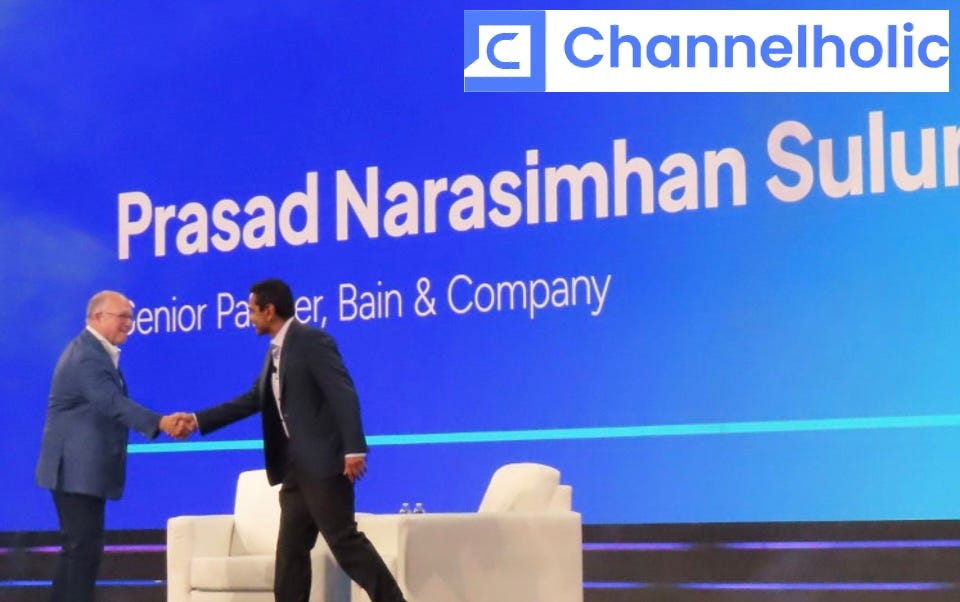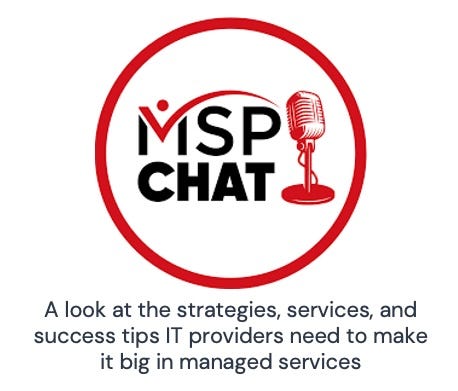Bain on Agentic Pricing and AI: Get Started, People
A senior partner at the global consultancy urges MSPs to start experimenting with agentic AI pricing models and AI service practices.
I predict this won’t make you nearly as happy as it made me, but one of the mainstage speakers at DattoCon this year was a pricing expert.
To be fair, that undersells his expertise. Prasad Narasimhan Sulur of Bain & Co. (pictured right opposite Kaseya chief community officer Gary Pica) is an expert on pricing, managed services, and private equity who wrote his master’s thesis about AI. This guy I needed to meet.
Thankfully for me, he agreed to make some time. And it turns out I’m not crazy in his view. Per this post from last year and this much more recent one, agentic AI will soon scramble some of the managed services world’s most bedrock pricing assumptions.
“In today’s world, it’s very easy to have the discussion based on number of employees, because that’s representative of the size of the organization and a proxy for the level of the work you’re going to be doing for the company,” Sulur says. “But you can imagine in tomorrow’s world there could be successful companies that need a lot of technology but don’t need a lot of people.”
Mostly thanks to the AI solution you sold them, moreover. Stick to per-user pricing and there will be an inverse relationship between what you’re charging and the value you’re delivering. Sulur, like other experts I’ve consulted with recently, sees promise in compensating for that conundrum by embracing a hybrid pricing model combining something per user with an outcome- or usage-based component, assuming you can figure out a practical formula for measuring that latter element.
“How do I measure usage?” Sulur asks. “How am I going to measure outcome?” There are no easy answers, he notes, which is why you should begin experimenting now.
“It’s one of those things where if you don’t do anything now or two, three years from now, it probably doesn’t matter,” Sulur says. “But it’s going to shift, and when it shifts, if you haven’t already done the work to prepare for it, it’ll be more difficult for you to make the switch.”
Now’s a good time for MSPs to start establishing AI practices too, according to Sulur, while the M&A wave already creating MSP giants is merely in the third or fourth metaphorical inning.
“In the third or fourth inning, it feels like you still have time,” Sulur observes. “The way it’s going to feel different once you’re in the seventh or eighth inning is I think customers get really sophisticated because they now have a lot of options.”
Specifically with respect to AI, he continues, where it already seems like there are more options every week. Just yesterday, in fact, tech and telecom provider UPSTACK announced its acquisition of Breakwater Cloud Advisors, a contact center AI transformation specialist. That came eight days after IronEdge, a Texas-based managed IT and cybersecurity solution provider with offices in five other states, announced the introduction of a managed AI service and a little over a month after IT services heavyweight Thrive introduced a managed AI service of its own.
“You’re going to be in a place where your business model won’t be as competitive if you’re just doing the things you’re doing today,” Sulur warns.
Especially if you’re doing those things the same way for everyone regardless of their vertical. The demanding clients you’ll be courting during the seventh inning stretch will want technology partners with industry-specific expertise.
“Customers are going to say, ‘OK, you want to be my MSP? What experience do you have in banking? What experience do you have in doctor’s offices?’” Sulur says. Answer those queries the wrong way, he continues, and you’ll have a tough time winning and retaining clients. Answer them the right way, and you’ll be positioned to transition beyond increasingly commoditized IT services into higher-margin AI business consulting.
“There’s an opportunity for you to move from the back of the house to the middle of the house or the front of the house by becoming the person who can help customers like a bank with their own customer service,” Sulur says, or with “deposit intelligence, lending intelligence.”
Or, alternatively, you can stay the course and wind up selling the IT world’s least profitable services to the business world’s least profitable customers.
“Five years from now, we’ll be talking about the bifurcation of the MSPs that made the jump versus the ones that didn’t,” Sulur says. Better to be among those that did.
Podcasting with Pica
Sulur spoke onstage with Kaseya’s Gary Pica during DattoCon. I got to speak with him the same day for the latest episode of MSP Chat, the podcast I co-host. You’ll find that interview here and all our many episodes here.




